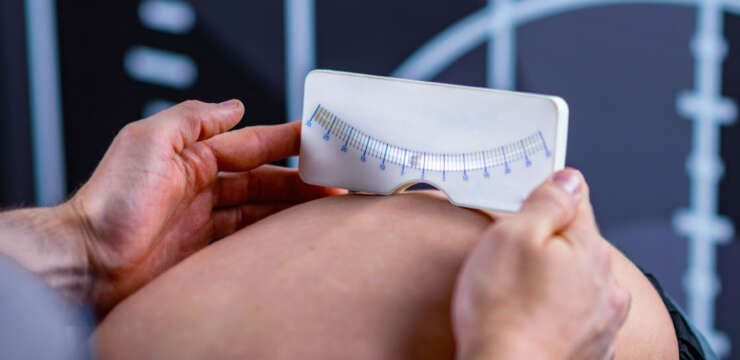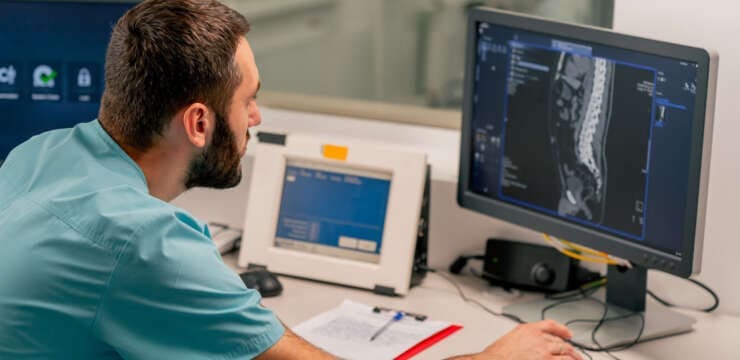Can postural assessments help identify problems with how a person stands or sits, which can lead to various musculoskeletal issues? Postural Assessment Proper posture is…

Chiropractic Examination:
Health coaches guide individuals in being healthy and feeling their best. Part of being healthy is taking care of your body. Taking care of your body goes beyond diet, but physical practices as well. Chiropractic care is a great way to take care of your body to keep everything in line and order. An initial chiropractic examination for musculoskeletal disorders will typically have four parts: a consultation, case history, and physical examination. Laboratory analysis and X-ray examination may be performed. Our office provides additional Functional and Integrative Wellness Assessments in order to bring greater insight into a patients physiological presentations.
Consultation:
The patient will meet the chiropractor which will assess and question a brief synopsis of his or her lower back pain, such as:
Duration and frequency of symptoms
Description of the symptoms (e.g. burning, throbbing)
Areas of pain
What makes the pain feel better (e.g. sitting, stretching)
What makes the pain feel worse (e.g. standing, lifting).
Case history. The chiropractor identifies the area(s) of complaint and the nature of the back pain by asking questions and learning more about different areas of the patient’s history, including:
Family history
Dietary habits
Past history of other treatments (chiropractic, osteopathic, medical and other)
Occupational history
Psychosocial history
Other areas to probe, often based on responses to above questions.
Physical examination:
 We will utilize a variety of methods to determine the spinal segments that require chiropractic treatments, including but not limited to static and motion palpation techniques determining spinal segments that are hypo mobile (restricted in their movement) or fixated. Depending on the results of the above examination, a chiropractor may use additional diagnostic tests, such as:
X-ray to locate subluxations (the altered position of the vertebra)
A device that detects the temperature of the skin in the paraspinal region to identify spinal areas with a significant temperature variance that requires manipulation.
Laboratory Diagnostics:
 If needed we also use a variety of lab diagnostic protocols in order to determine complete clinical picture of the patient. Our health coach and office have teamed up with the top labs in the city in order to give our patients the optimal clinical picture and appropriate treatments.

Can postural assessments help identify problems with how a person stands or sits, which can lead to various musculoskeletal issues? Postural Assessment Proper posture is…

Uncover the importance of identity formation in therapy and its role in shaping personal identity over time. Introduction Many individuals deal with musculoskeletal, autoimmune, gut,…

The Cobb angle is a mathematical measurement tool for assessing the curvature of the spine. Along with physical exams and other tests, how is it…

Can the straight leg test help find the cause of back or hamstring pain in individuals experiencing it? Straight Leg Test The straight leg raise…

For individuals who have to be in one position for long periods, have poor postural alignment, and perform repetitive motions, what are myofascial pain syndrome…

Can understanding the planes of motion help individuals adjust fitness training to maximize fitness for physical and sports performance and reduce the risk of injury?…

How are MRIs used to help diagnose bulging and herniated discs and help healthcare providers develop effective treatment programs for individuals experiencing back pain symptoms?…

The iliacus muscle is a triangle-shaped muscle in the pelvic bone that flexes and rotates the thigh bone. It works with the other muscles in…

For individuals who may need to take pain medications to manage an injury or condition, can knowing the potential side effects help in treatment? Medications…

Can healthcare professionals implement H.E.A.R.T. protocols for trafficked individuals while providing a safe space? Introduction Across the world, many local media and organizations are paying…

Individuals who have experienced spinal or back trauma, suffered fractures, are going through spinal degeneration, or are dealing with a spinal condition have an increased…

Can the Oswestry Low Back Pain Disability Questionnaire help assess how low back pain impacts individuals’ ability to perform everyday tasks and activities and help…

Back pain is one of the most common reasons for seeking health care. Individuals dealing with back pain but don’t know the cause may have…

For individuals experiencing piriformis syndrome. Can knowing the causes and what it feels like help in diagnosis and treatment? Managing Piriformis Syndrome Piriformis syndrome is…

For individuals who sit at work for long hours, can years of practicing unhealthy posture be corrected through a step-by-step approach to ensure optimal body…

How do healthcare professionals in a chiropractic clinic provide a clinical approach to recognizing impairment for individuals in pain? Introduction Any article you read…

For individuals who are getting older, can increasing bone strength help prevent fractures and optimize bone health? Bone Strength Bone strength is important, as a…